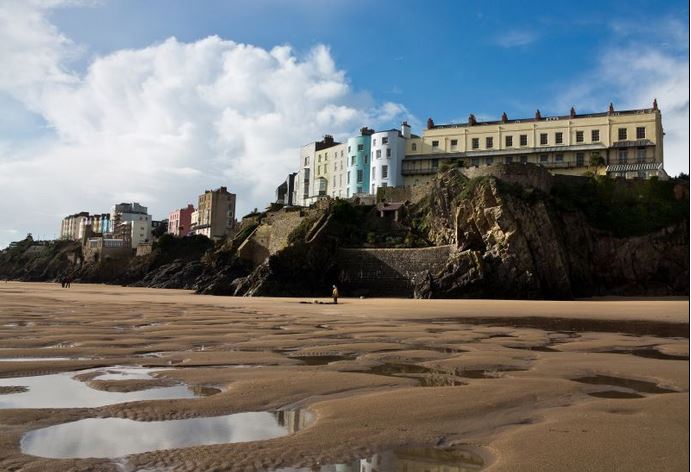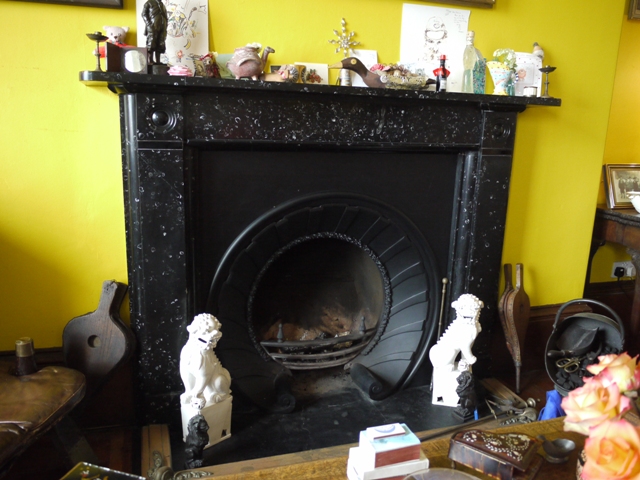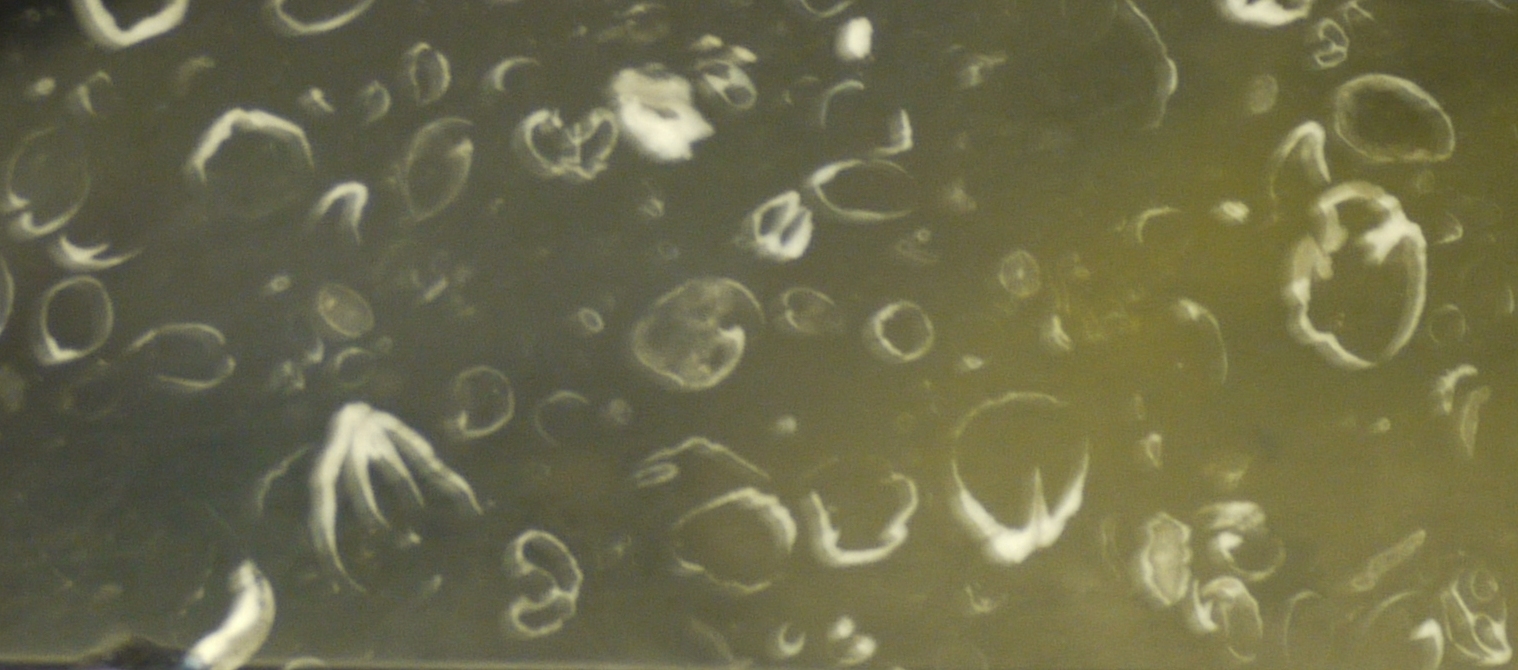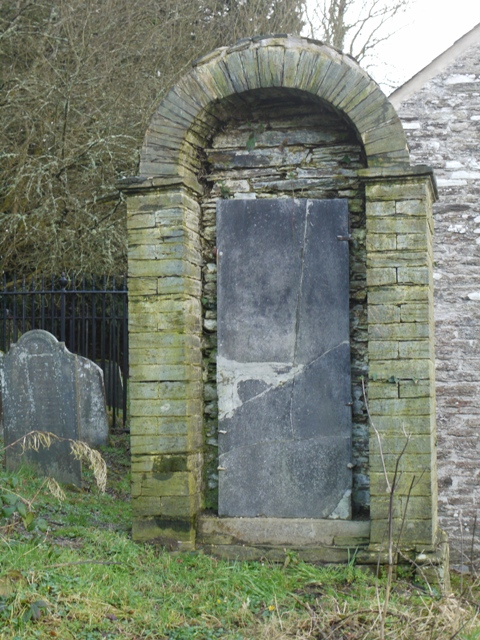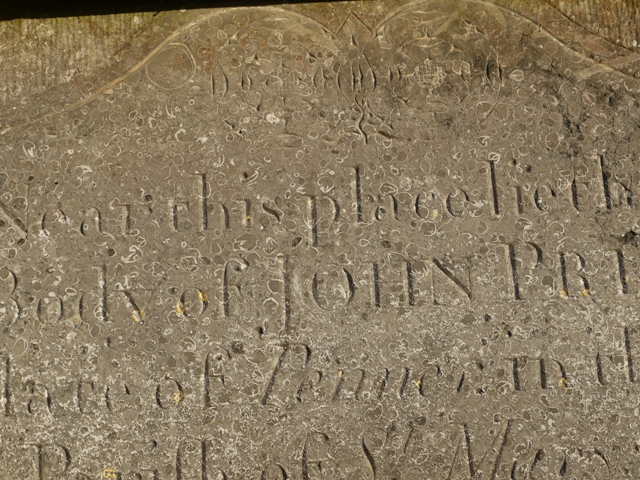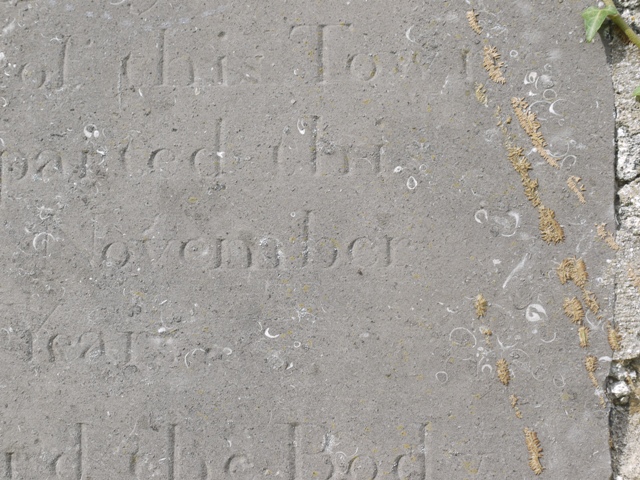by The Curious Scribbler,
I called in at St Michael’s Eglwysfach this afternoon to view their latest exhibition – of historic and recent Bridal and Baptismal Gowns. The exhibits are provided by people who are local to the area, some who were born in the parish, others who migrated from elsewhere bringing their memorabilia with them. First impressions are of an airy whitewashed church interior with simple dark brown box pews. Each pew gives access to a wooden mannequin clothed in wedding gown, and a short description of the gown, its wearer and its day of glory. Curated by Lynda Thomas, the exhibition casts fascinating light on not just the fluctuations of fashion but on the social history of the last century or so. Accompanying material include wedding photographs and the wearer’s memories. It is much more personal than just an exhibition of gowns.
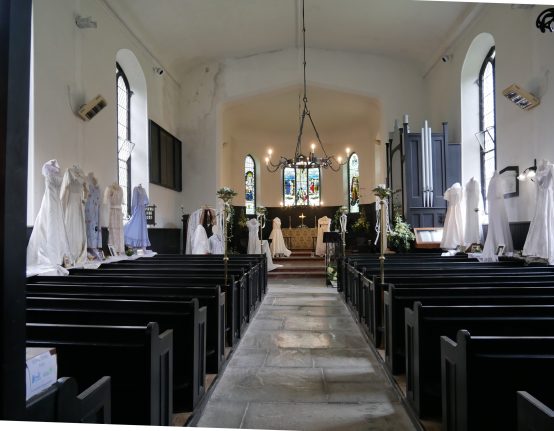
St Michael’s Eglwsfach adorned with wedding gowns
The oldest gown on display went up the aisle in 1928 fashionably exposing Sue Billingsley’s grandmother’s ankles. Muriel Mary Richards made the dress herself in fine silk velvet with appliqued velvet flowers and embroidery and beads. She must have been a talented seamstress. Possibly age has discoloured it. In the accompanying photograph is looks to be white.
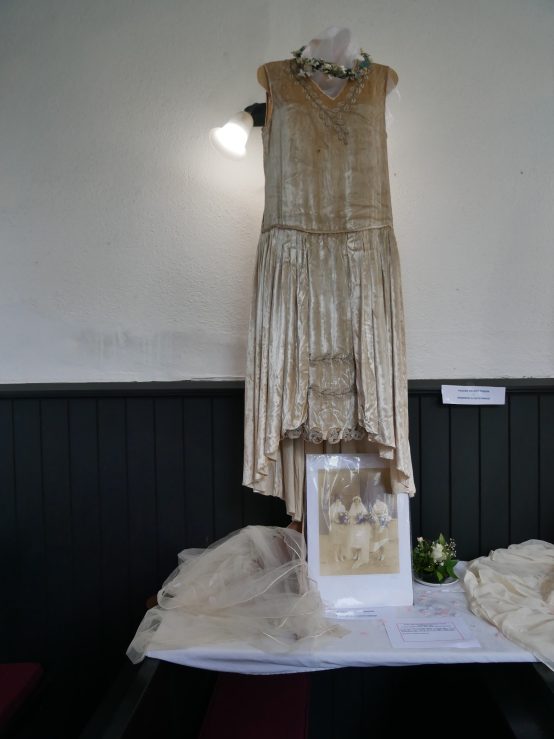
The oldest gown worn in 1928 in West Bridgford, Nottingham
Next in antiquity was a heavy figured satin gown with long fitted sleeves and a broad divided collar. Alison Swanson’s auntie wore it to her wedding at St Matthew’s Church, Borth in 1957. A prestigious dress from Roecliff and Chapman of Grosvenor Street, London, couturiers to Princess Grace Kelly. Eleven years later Alison wore it to her own wedding at the same church. Flanking this mighty dress are those of her two daughters-in-law who were married this century. The contemporary take on the formal white dress involves bare arms and shoulders which would have surprised the great aunt. The other bride wore a pretty informal floral gown.
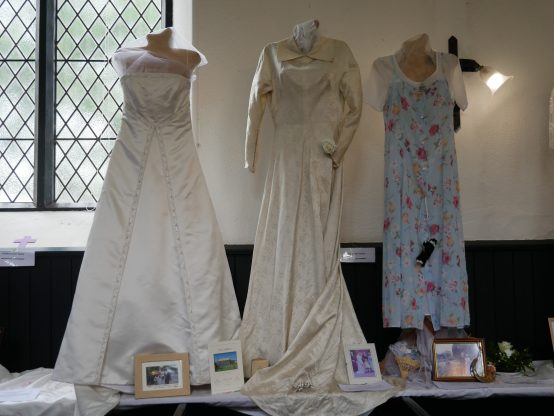
Alison Swanson married in 1968 wearing her auntie’s vintage 1957 gown. Her two daughters in laws’ dresses on either side.
Had Alison been buying anew, she might instead have considered a statuesque flowing dress like the one worn by Mary Andrews when she married Keith Fletcher at St Bride’s Church, Cwmdauddwr Rhayader. From Marshall and Snelgrove’s grand London store, it was of floaty rayon georgette fabric suspended from a bodice and sleeves of Guipure lace with pearl droplets. The groom must have had to take care not to tread on her train.
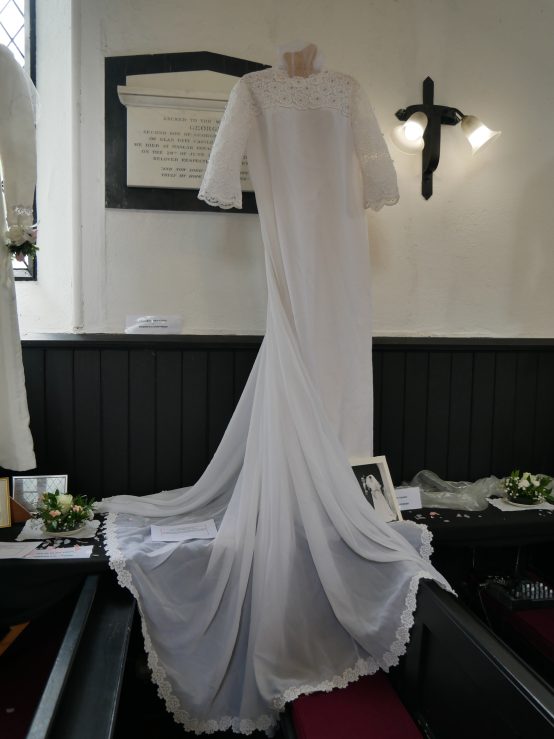
1967 gown with a long train from up-market department store Marshall and Snelgrove
Another mother and daughter trio was provided by Celia Boorman whose wedding to Russell Davies took place in 1972 at St Petroc’s Church, South Brent, in Devon. Graduate students at Oxford at the time, they were on their way to buy tyres for his Mini when she spotted this flamboyant dress in a shop window in Cowley.

Celia Boorman married in 1972 in this flamboyant dress, her daughters’ dresses are on either side .
Her daughter Imogen married at Gregynog Hall in 2014 wearing another white bare shouldered dress, while in 2018 daughter Tamsin had two wedding outfits, one for her wedding at St Michael’s Eglwysfach and the other for her Hindu wedding in Bradford. The sari is displayed like a tent behind the mannequin.
Sheila Cuthbert wore a pale blue Laura Ashley ‘Prairie’ dress when she married Mervyn Lloyd in Wombourne Registry Office in 1979. Sleeves were long and necks were high in the 1970s. It put me in mind of a similar dress I wore to my wedding in 1973. My mother-in-law forbade a white wedding because she knew we had already shared a tent! These were dresses which could come out on other occasions: Sheila wore hers at a Millenium party.
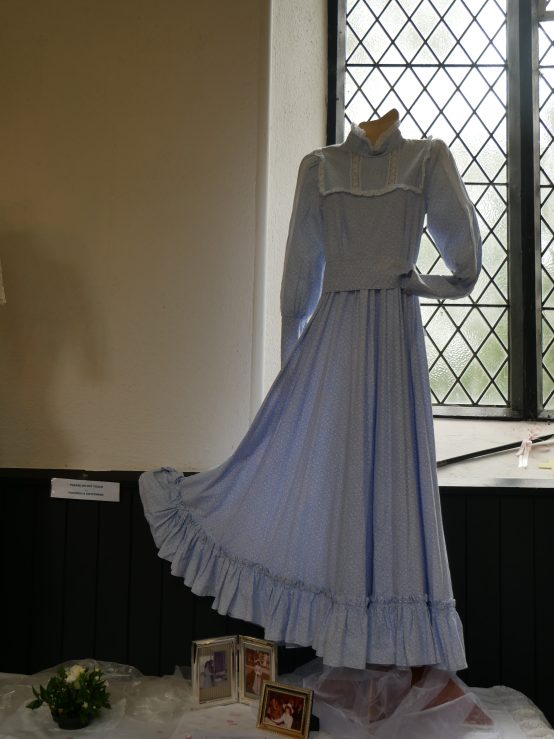
A blue Laura Ashley gown for Sheila Cuthbert and Mervyn Lloyd’s registry office wedding in 1979
Lynda Warren was married twice in the 1980s, both times wearing a hat. Her second wedding, to Barry Thomas, was in a Registry Office and a chic Mothercare maternity gown. It was touch and go whether the nuptuals would precede the baby.
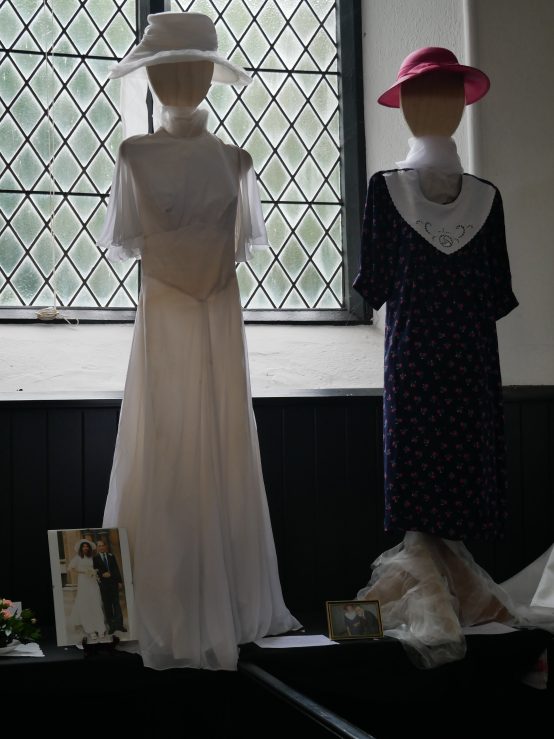
Two 1980s gowns worn by Lynda Warren
The collection of baptismal gowns is less varied that the bridal ones, and also older, with several Victorian or Edwardian gowns which have attended numerous family christenings. The main fashion trend seems to have been that they have got a little shorter over the decades. They are displayed in the enclosure around the font alongside glowering images of RS Thomas.
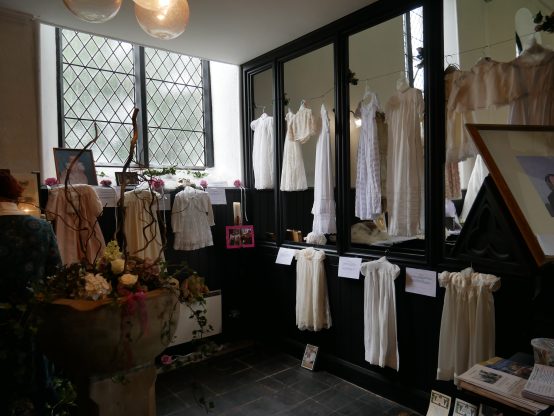
Baptism Gowns displayed around the font
Many families have carefully preserved their baptismal gowns, but Joy Neal must be congratulated on also retaining the box.
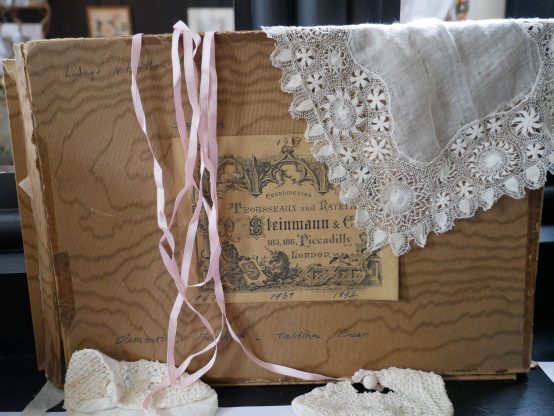
Trouseaux and layettes from Steinmann & Co of Piccadilly
The Exhibition is open till the end of the month 10am-4pm with the option of tea and cake for a modest £2.00 a head. Donations support local charities Hospice at Home ( HAHAV) and Riding for the Disabled (RDA). I reccommend it.

